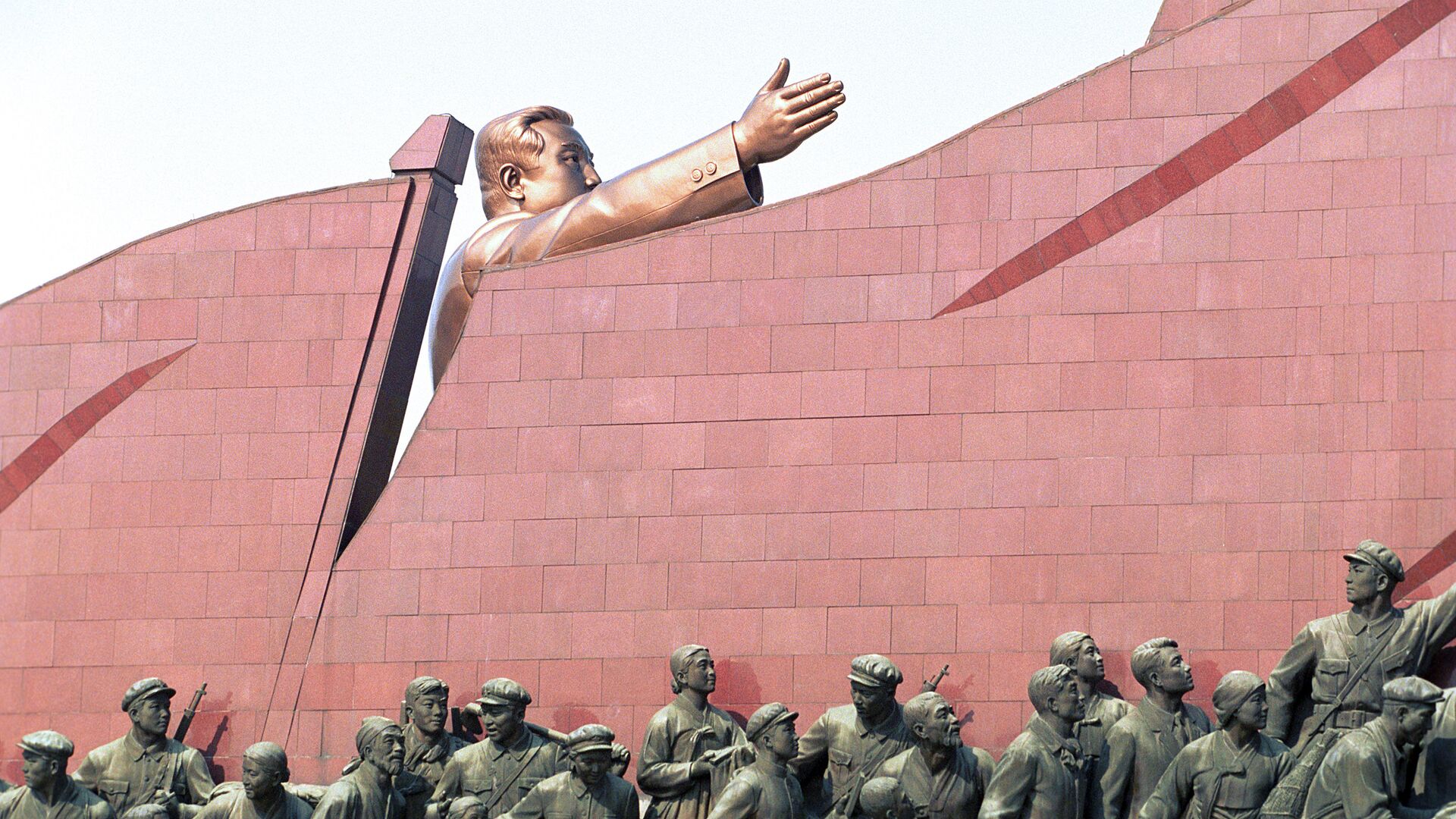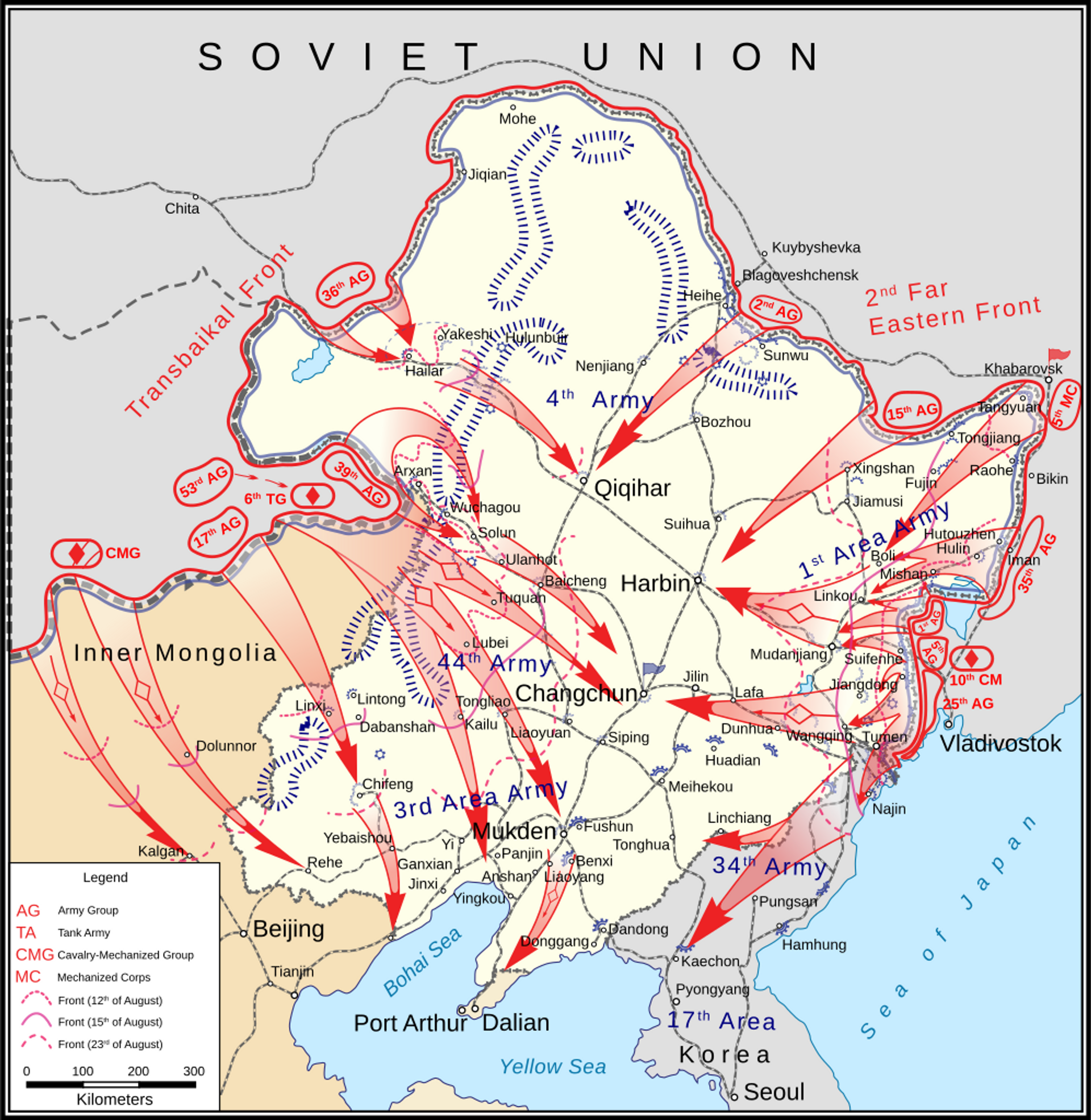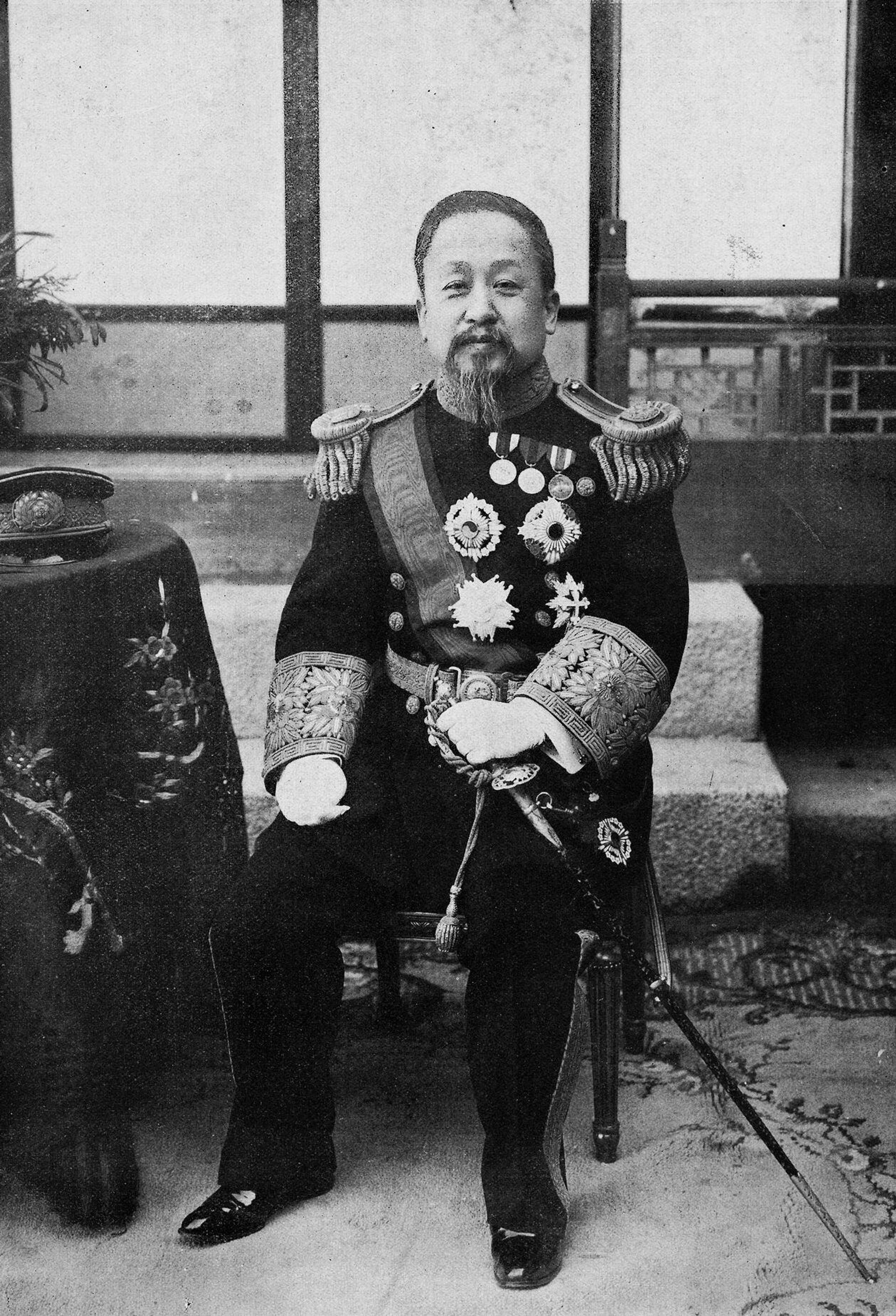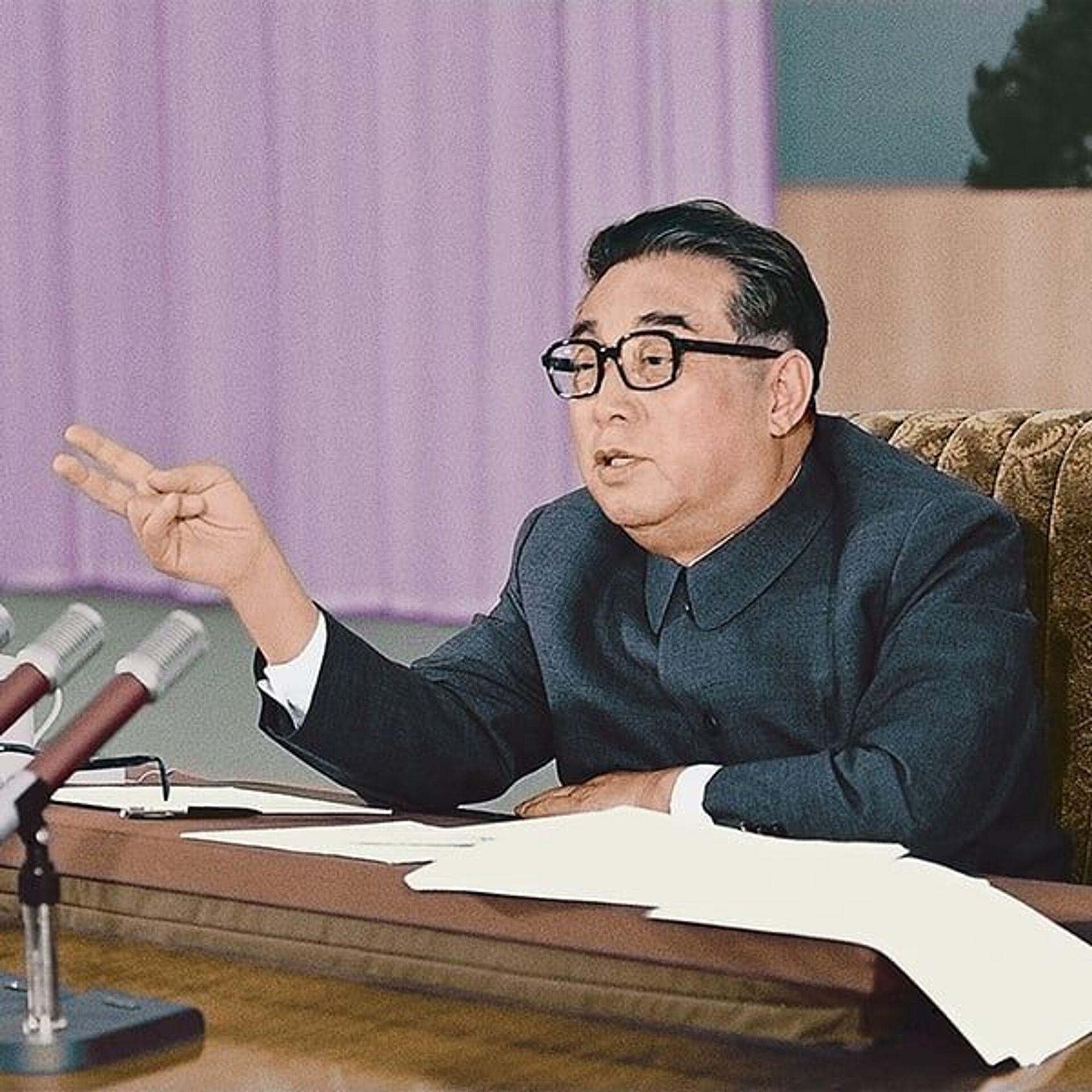https://sputnikglobe.com/20230628/the-73-year-long-war-how-cold-war-rivalries-set-off-the-korean-conflict-1111503385.html
The 73-Year-Long War: How Cold War Rivalries Set Off the Korean Conflict
The 73-Year-Long War: How Cold War Rivalries Set Off the Korean Conflict
Sputnik International
Sputnik takes a look back at the Korean War, which has technically not ended, owing to the absence of a permanent peace treaty, and which has cast a long shadow over events in the region ever since.
2023-06-28T16:17+0000
2023-06-28T16:17+0000
2023-09-18T13:37+0000
sputnik explains
kim il-sung
korean people’s army (kpa)
korean war
south korea
cold war
north korea
https://cdn1.img.sputnikglobe.com/img/15607/11/156071196_0:0:3001:1688_1920x0_80_0_0_d632aecb93b10eb8e4c8d572f1a0dec0.jpg
Sputnik takes a look back at the conflict, which has technically not ended, owing to the absence of a permanent peace treaty, and which has cast a long shadow over events in the region ever since.War’s Roots in Anti-Colonial ResistanceIn the mid-19th century, the imperial authority of the Chinese emperor steadily waned under the pressure of civil war and European penetration, and its centuries-long domination of Korea as a vassal state began to weaken as well. At the same time, the Japanese Empire’s rapid industrialization led to an expansionist drive and a growing sense of entitlement to rule other East Asian nations.By the turn of the century, Korea was slowly falling into Japan’s sphere of influence. After the more modern Japanese naval and land forces defeated the Chinese in a short war in 1894 and 1895, that slide accelerated, and China lost its grip on the kingdom. King Gojong declared a Korean Empire two years later, and for a few brief years, Gojong's friendship with Russia allowed St. Petersburg to expand its foothold in the region. However, Japan, perceived Korea as "a knife aimed at the heart of Japan," and after triumphing against Russian forces in the Russo-Japanese War of 1905, Japan made Korea a protectorate of the Chrysanthemum Throne and annexed it in 1910.Like the other territories taken from China and Russia, such as Taiwan and southern Sakhalin, Tokyo ruled Korea as a colony to supply the mother country with raw materials, including cheap manual labor, and instituted a racialized hierarchical system that saw Koreans become legally inferior to Japanese and their language and culture denigrated. The school system attempted to instill Japanese language, culture, religion, and values in Koreans in an attempt to “civilize” them, much as happened in European imperial holdings.After Emperor Gojong died in 1919, major anti-Japanese demonstrations took place across Korea involving millions of people. The March 1 Movement formed a provisional government abroad and declared independence for Korea. The movement was violently suppressed by the Japanese, with 7,509 people killed, 15,961 wounded, and another 46,948 arrested in the repression.Other guerrilla movements continued to operate from Chinese Manchuria until Japanese occupation in the early 1930s, including communist forces with whom Kim Il-sung associated. As Japanese rule expanded across Manchuria and an all-out invasion of China began in 1937, Kim’s leadership grew and he became a major leader of Korean anti-Japanese resistance in the area.World War to Korean IndependenceDuring World War II, Korean men were used as slave labor both in Korea and across the empire, including in factories in Japan. According to some estimates, 10% of those killed in Hiroshima when the US dropped a nuclear bomb on the city on August 6, 1945, were Koreans mobilized to work in Japanese munitions factories in the city. Korean women were also used as sex slaves for Japanese soldiers - euphemistically called “comfort women.”The war only arrived in Korea during its final weeks, when the Soviet Red Army declared war on Japan and launched invasions of Japanese-controlled Manchuria and Korea. Their forces included thousands of Chinese and Korean communists, including Kim’s group. By the time of the formal signing of the Japanese surrender on September 2, Soviet troops had reached the 38th parallel - close to the effective modern border between North and South Korea. By agreement with the Americans, Soviet troops held there and waited for US military forces to meet them from the south, which took several weeks.American orders to Japanese forces in the southern parts of Korea were for them to continue occupying the area until US forces arrived and met Soviet forces at the 38th parallel.With the UN’s failure, the US moved to solidify capitalist control over the southern half of Korea, holding UN-supervised constituent assembly elections in May 1948 that excluded the Soviet-controlled northern half of the country. Presidential elections that July saw Syngman Rhee become president.Civil WarRhee’s government was immediately faced with widespread resistance, including by the Workers Party of South Korea (WPSK) on Jeju Island, and another resistance movement in the southern cities of Yeosu and Suncheon, both of which were violently suppressed, killing more than 30,000 people. The WPSK saw the elections as an attempt to divide the country in two instead of uniting it. They weren’t alone in thinking so, and other resistance movements sprang up in the months and years that followed.On August 15, 1948, Rhee declared himself the head of a Republic of Korea (RoK) whose territory encompassed all of Korea but was based in Seoul, the traditional capital, which was then occupied by US troops. In response, the Workers Party of North Korea (WPNK) declared a rival Democratic People’s Republic of Korea (DPRK) on September 9, also claiming control over the entire territory of Korea and that Seoul was its capital. Kim Il-sung, the party’s deputy chairman, was its premier.With the declarations, Soviet and American forces began to withdraw, with the Red Army and most of the US Army totally exiting from Korea by the end of the year, although some US forces remained. However, with their absence, the situation grew even more unstable, and in 1949 rapidly accelerated toward open civil war.By May 1949, the forces of the two sides were regularly engaging each other across the borderlands and launching raids into the others’ territory, and guerrilla groups sprang up on both sides. Most of the battles were fought in the South, however, as Rhee’s government sought to crush one pro-communist unification movement after another. That June, the WPNK and WPSK merged to form a single, united Workers Party of Korea (WPK) that fought for a united socialist Korea.Cold War PoliticsAs early as the Spring of 1949, with the repression of communist sympathizers in the South still actively underway, Kim considered launching a full-scale attack with the new Korean People’s Army (KPA), fitted out with excess Soviet equipment. The idea failed to win approval from Soviet leader Josef Stalin, who felt the international situation was too unstable for such a war. Civil war continued to rage in China, which communist forces would ultimately win that October, American intervention in Greece had ensured the Greek communists would be defeated, and US forces were still present in South Korea. At the time, only the United States possessed nuclear weapons - the USSR’s first bomb would not be detonated until August 1949.Stalin gave his assent to a reunification war by the DPRK, but under the condition that Chinese leader Mao Zedong also approved it, and he made clear that Soviet troops would not directly intervene. However, reportedly at Kim’s insistence, Mao did pledge to move troops to the PRC-DPRK border and to use them if they were needed.. After the war began and United Nations forces launched a counteroffensive, crossing the 38th parallel and quickly advancing to Chinese border, Soviet pilots secretly flew air cover for the KPA, and a massive Chinese force eventually and decisively entered the war under Korean command - the People’s Volunteer Army.Among the final straws was the May 30 South Korean elections, which Rhee was compelled to hold against his desire, and which resulted in his National Association party losing control over the legislature. With several Korean nationalist parties now in control and significant pro-socialist and pro-reunification sentiment remaining across the South, Rhee’s position of ruling a capitalist state on behalf of the Americans seemed increasingly vulnerable.Five days later on June 4, the socialists and communists both performed well in Japan’s first legislative elections since the US occupation began in 1945, further arousing fears in Washington of a loss of position in East Asia after the “loss” of China the previous year.Reunification by Peace or WarKim moved quickly for reunification following Rhee’s defeat, but his first offensive was diplomatic. On June 7, Kim called for a consultative conference to be held on June 15-17 and for Korea-wide elections to be held that August - both proposals were rejected. Then on June 11, he sent three diplomats to Rhee with a peace overture, which the South Korean leader also rejected. According to US diplomats in Seoul at the time, including John Foster Dulles, Rhee rejected these overtures because his desire was nothing short of conquest of the North, and he believed the troop retraining by the US Korean Military Advisory Group would make that possible.Throughout June, hostilities along the intra-Korean border intensified, with both North and South Korean forces launching raids and bombardments against the other. As the KPA moved its forces southward toward the border, the American CIA observed their movement but judged it to be a “defensive measure” against further South Korean attacks, and saw an invasion as unlikely.On June 27, the US brought before the United Nations Security Council Resolution 83, calling for an international force to come to the aid of South Korea and restore peace to the Korean Peninsula. The resolution passed because the Soviet Union was boycotting the UN in solidarity with the PRC, since the UN continued to recognize the Republic of China as the legitimate government of China, even though by that point the RoC only controlled Taiwan and the PRC controlled the entire mainland.
south korea
north korea
Sputnik International
feedback@sputniknews.com
+74956456601
MIA „Rossiya Segodnya“
2023
News
en_EN
Sputnik International
feedback@sputniknews.com
+74956456601
MIA „Rossiya Segodnya“
Sputnik International
feedback@sputniknews.com
+74956456601
MIA „Rossiya Segodnya“
korean war; south korea; dprk; cold war; syngman rhee; kim il-sung
korean war; south korea; dprk; cold war; syngman rhee; kim il-sung
The 73-Year-Long War: How Cold War Rivalries Set Off the Korean Conflict
16:17 GMT 28.06.2023 (Updated: 13:37 GMT 18.09.2023) Longread
On Sunday, thousands in Korea marked the 73rd anniversary of the start of the Korean War, the most destructive event in the peninsula’s history, and a month from Wednesday, the 70th anniversary of the armistice that ended the fighting in that war will also be commemorated.
Sputnik takes a look back at the conflict, which has technically not ended, owing to the absence of a permanent peace treaty, and which has cast a long shadow over events in the region ever since.
War’s Roots in Anti-Colonial Resistance
In the mid-19th century, the imperial authority of the Chinese emperor steadily waned under the pressure of civil war and European penetration, and its centuries-long domination of Korea as a vassal state began to weaken as well. At the same time, the Japanese Empire’s rapid industrialization led to an expansionist drive and a growing sense of entitlement to rule other East Asian nations.
By the turn of the century, Korea was slowly falling into Japan’s sphere of influence. After the more modern Japanese naval and land forces defeated the Chinese in a short war in 1894 and 1895, that slide accelerated, and China lost its grip on the kingdom. King Gojong declared a Korean Empire two years later, and for a few brief years, Gojong's friendship with Russia allowed St. Petersburg to expand its foothold in the region. However, Japan, perceived Korea as "a knife aimed at the heart of Japan," and after triumphing against Russian forces in the Russo-Japanese War of 1905, Japan made Korea a protectorate of the Chrysanthemum Throne and annexed it in 1910.
Like the other territories taken from China and Russia, such as Taiwan and southern Sakhalin, Tokyo ruled Korea as a colony to supply the mother country with raw materials, including cheap manual labor, and instituted a racialized hierarchical system that saw Koreans become legally inferior to Japanese and their language and culture denigrated. The school system attempted to instill Japanese language, culture, religion, and values in Koreans in an attempt to “civilize” them, much as happened in European imperial holdings.
The Japanese rulers in Korea faced nearly nonstop rebellions and insurrections by Korean nationalists, whose belief in Korea’s right to independence had first been stirred against Chinese suzerainty. Such movements included the Righteous Army of Yi In-yeong and the March 1 Movement.
After Emperor Gojong died in 1919, major anti-Japanese demonstrations took place across Korea involving millions of people. The March 1 Movement formed a provisional government abroad and declared independence for Korea. The movement was violently suppressed by the Japanese, with 7,509 people killed, 15,961 wounded, and another 46,948 arrested in the repression.
Other guerrilla movements continued to operate from Chinese Manchuria until Japanese occupation in the early 1930s, including communist forces with whom Kim Il-sung associated. As Japanese rule expanded across Manchuria and an all-out invasion of China began in 1937, Kim’s leadership grew and he became a major leader of Korean anti-Japanese resistance in the area.
World War to Korean Independence
During World War II, Korean men were used as slave labor both in Korea and across the empire, including in factories in Japan. According to some estimates, 10% of those killed in Hiroshima when the US dropped a nuclear bomb on the city on August 6, 1945, were Koreans mobilized to work in Japanese munitions factories in the city. Korean women were also used as sex slaves for Japanese soldiers - euphemistically called “comfort women.”
The war only arrived in Korea during its final weeks, when the Soviet Red Army declared war on Japan and launched invasions of Japanese-controlled Manchuria and Korea. Their forces included thousands of Chinese and Korean communists, including Kim’s group. By the time of the formal signing of the Japanese surrender on September 2, Soviet troops had reached the 38th parallel - close to the effective modern border between North and South Korea. By agreement with the Americans, Soviet troops held there and waited for US military forces to meet them from the south, which took several weeks.
American orders to Japanese forces in the southern parts of Korea were for them to continue occupying the area until US forces arrived and met Soviet forces at the 38th parallel.
That December, a conference of Soviet, British, and American ministers in Moscow decided on a five-year joint trusteeship for all of Korea under the control of a consortium of the US, USSR, UK, and China, the lattermost of which was still under republican rule.
After that time, Korea would become a united, independent country. However, as capitalist and communist rivalries began to slide toward the standoff of the Cold War, this effort began to collapse, and the United Nations was unable to mediate a compromise.
With the UN’s failure, the US moved to solidify capitalist control over the southern half of Korea, holding UN-supervised constituent assembly elections in May 1948 that excluded the Soviet-controlled northern half of the country. Presidential elections that July saw Syngman Rhee become president.
Rhee’s government was immediately faced with widespread resistance, including by the Workers Party of South Korea (WPSK) on Jeju Island, and another resistance movement in the southern cities of Yeosu and Suncheon, both of which were violently suppressed, killing more than 30,000 people. The WPSK saw the elections as an attempt to divide the country in two instead of uniting it. They weren’t alone in thinking so, and other resistance movements sprang up in the months and years that followed.
On August 15, 1948, Rhee declared himself the head of a Republic of Korea (RoK) whose territory encompassed all of Korea but was based in Seoul, the traditional capital, which was then occupied by US troops. In response, the Workers Party of North Korea (WPNK) declared a rival Democratic People’s Republic of Korea (DPRK) on September 9, also claiming control over the entire territory of Korea and that Seoul was its capital. Kim Il-sung, the party’s deputy chairman, was its premier.
With the declarations, Soviet and American forces began to withdraw, with the Red Army and most of the US Army totally exiting from Korea by the end of the year, although some US forces remained. However, with their absence, the situation grew even more unstable, and in 1949 rapidly accelerated toward open civil war.
By May 1949, the forces of the two sides were regularly engaging each other across the borderlands and launching raids into the others’ territory, and guerrilla groups sprang up on both sides. Most of the battles were fought in the South, however, as Rhee’s government sought to crush one pro-communist unification movement after another. That June, the WPNK and WPSK merged to form a single, united Workers Party of Korea (WPK) that fought for a united socialist Korea.
As early as the Spring of 1949, with the repression of communist sympathizers in the South still actively underway, Kim considered launching a full-scale attack with the new Korean People’s Army (KPA), fitted out with excess Soviet equipment. The idea failed to win approval from Soviet leader Josef Stalin, who felt the international situation was too unstable for such a war. Civil war continued to rage in China, which communist forces would ultimately win that October, American intervention in Greece had ensured the Greek communists would be defeated, and US forces were still present in South Korea. At the time, only the United States possessed nuclear weapons - the USSR’s first bomb would not be detonated until August 1949.
By the following spring, however, that had changed. The Chinese communists founded the People’s Republic of China in Beijing after winning the civil war, and a significant number of Korean fighters sent to aid the Chinese in the fight for Manchuria had returned to the DPRK.
The Soviet Union was also now in possession of nuclear weapons, ending the US monopoly, and Soviet intelligence had cracked enough US diplomatic codes to judge that Washington was not concerned enough about “losing” Korea to use nuclear weapons to stop a communist victory.
Stalin gave his assent to a reunification war by the DPRK, but under the condition that Chinese leader Mao Zedong also approved it, and he made clear that Soviet troops would not directly intervene. However, reportedly at Kim’s insistence, Mao did pledge to move troops to the PRC-DPRK border and to use them if they were needed.. After the war began and United Nations forces launched a counteroffensive, crossing the 38th parallel and quickly advancing to Chinese border, Soviet pilots secretly flew air cover for the KPA, and a massive Chinese force eventually and decisively entered the war under Korean command - the People’s Volunteer Army.
Among the final straws was the May 30 South Korean elections, which Rhee was compelled to hold against his desire, and which resulted in his National Association party losing control over the legislature. With several Korean nationalist parties now in control and significant pro-socialist and pro-reunification sentiment remaining across the South, Rhee’s position of ruling a capitalist state on behalf of the Americans seemed increasingly vulnerable.
Five days later on June 4, the socialists and communists both performed well in Japan’s first legislative elections since the US occupation began in 1945, further arousing fears in Washington of a loss of position in East Asia after the “loss” of China the previous year.
Reunification by Peace or War
Kim moved quickly for reunification following Rhee’s defeat, but his first offensive was diplomatic. On June 7, Kim called for a consultative conference to be held on June 15-17 and for Korea-wide elections to be held that August - both proposals were rejected. Then on June 11, he sent three diplomats to Rhee with a peace overture, which the South Korean leader also rejected. According to US diplomats in Seoul at the time, including John Foster Dulles, Rhee rejected these overtures because his desire was nothing short of conquest of the North, and he believed the troop retraining by the US Korean Military Advisory Group would make that possible.
Throughout June, hostilities along the intra-Korean border intensified, with both North and South Korean forces launching raids and bombardments against the other. As the KPA moved its forces southward toward the border, the American CIA observed their movement but judged it to be a “defensive measure” against further South Korean attacks, and saw an invasion as unlikely.
The final North Korean attack came at dawn on June 25, and South Korean forces on the border quickly crumbled. Seoul was captured three days later. That same day, Rhee retaliated by ordering massacres of suspected South Korean socialists and communists, including the National Bodo League.
Historians estimate some 200,000 people were killed in these reprisals, even as the South Korean military was being decimated on the battlefield by North Korean forces.
On June 27, the US brought before the United Nations Security Council Resolution 83, calling for an international force to come to the aid of South Korea and restore peace to the Korean Peninsula. The resolution passed because the Soviet Union was boycotting the UN in solidarity with the PRC, since the UN continued to recognize the Republic of China as the legitimate government of China, even though by that point the RoC only controlled Taiwan and the PRC controlled the entire mainland.







